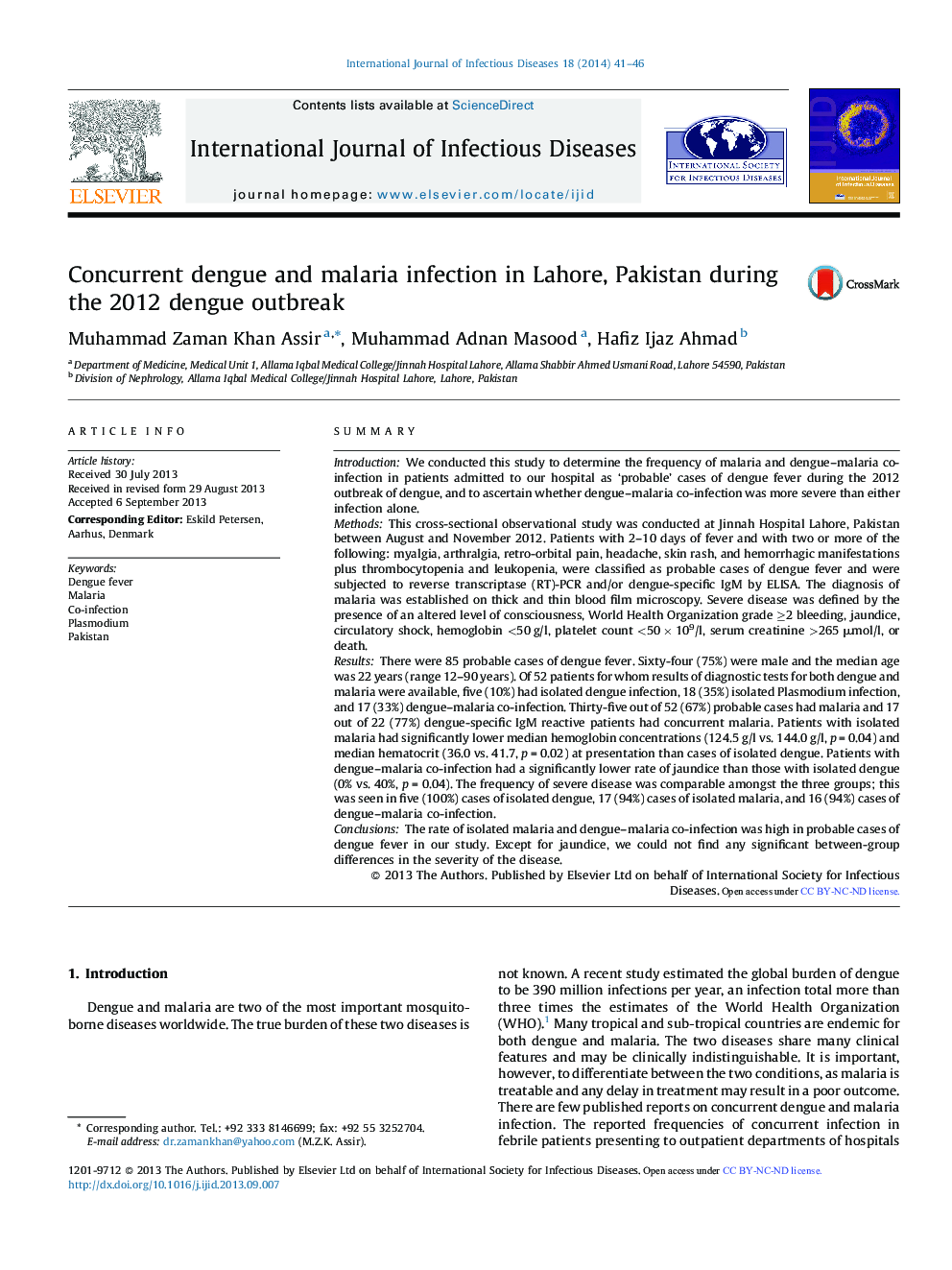| Article ID | Journal | Published Year | Pages | File Type |
|---|---|---|---|---|
| 3362816 | International Journal of Infectious Diseases | 2014 | 6 Pages |
SummaryIntroductionWe conducted this study to determine the frequency of malaria and dengue–malaria co-infection in patients admitted to our hospital as ‘probable’ cases of dengue fever during the 2012 outbreak of dengue, and to ascertain whether dengue–malaria co-infection was more severe than either infection alone.MethodsThis cross-sectional observational study was conducted at Jinnah Hospital Lahore, Pakistan between August and November 2012. Patients with 2–10 days of fever and with two or more of the following: myalgia, arthralgia, retro-orbital pain, headache, skin rash, and hemorrhagic manifestations plus thrombocytopenia and leukopenia, were classified as probable cases of dengue fever and were subjected to reverse transcriptase (RT)-PCR and/or dengue-specific IgM by ELISA. The diagnosis of malaria was established on thick and thin blood film microscopy. Severe disease was defined by the presence of an altered level of consciousness, World Health Organization grade ≥2 bleeding, jaundice, circulatory shock, hemoglobin <50 g/l, platelet count <50 × 109/l, serum creatinine >265 μmol/l, or death.ResultsThere were 85 probable cases of dengue fever. Sixty-four (75%) were male and the median age was 22 years (range 12–90 years). Of 52 patients for whom results of diagnostic tests for both dengue and malaria were available, five (10%) had isolated dengue infection, 18 (35%) isolated Plasmodium infection, and 17 (33%) dengue–malaria co-infection. Thirty-five out of 52 (67%) probable cases had malaria and 17 out of 22 (77%) dengue-specific IgM reactive patients had concurrent malaria. Patients with isolated malaria had significantly lower median hemoglobin concentrations (124.5 g/l vs. 144.0 g/l, p = 0.04) and median hematocrit (36.0 vs. 41.7, p = 0.02) at presentation than cases of isolated dengue. Patients with dengue–malaria co-infection had a significantly lower rate of jaundice than those with isolated dengue (0% vs. 40%, p = 0.04). The frequency of severe disease was comparable amongst the three groups; this was seen in five (100%) cases of isolated dengue, 17 (94%) cases of isolated malaria, and 16 (94%) cases of dengue–malaria co-infection.ConclusionsThe rate of isolated malaria and dengue–malaria co-infection was high in probable cases of dengue fever in our study. Except for jaundice, we could not find any significant between-group differences in the severity of the disease.
